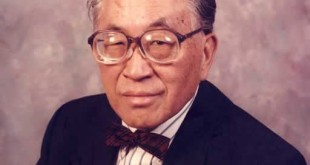How a group of researchers in Chicago are proving that community based health research is the way to study America’s diverse communities
By Jenny Chen
When I set out to explore “mental health among the Asian American elderly” as part of a fellowship from New America Media and the Gerontological Association of America, I didn’t realize what a daunting task this would be. There isn’t much comprehensive data on this topic. The few studies that are being done seem to be superficial: one study looked at the correlation between mental illness and a range of other factors including education level, economic security, health, etc. They did this for a variety of Asian American groups including South Asian, Chinese, Japanese, and Filipino. The difficulty with putting all those groups together is it suggests that there is a conclusion to be drawn from all their data as a whole – when there really isn’t. Similarly, the researchers looked at factors like education, economic security, etc. as if to suggest that there is a correlation and causation between those factors and mental illness, when there doesn’t seem to be strong evidence of that either. All this data is self-reported which is problematic, since anyone familiar with mental health issues in the Asian American community understand that Asian Americans (especially Asian American elderly) often don’t seek diagnosis. And of course, there is such a pervasive stigma against mental illness that even if they were diagnosed, they may not report it.
These researchers are what E-Shien Chang calls “parachute researchers” – researchers who go in to collect data without truly understanding the dynamics of a community. The subjects never hear back from the researchers ever again. “These [elderly] don’t want to be guinea pigs,” Chang said.
Chang is the research manager of a community based participatory research effort to document the psycho-social well-being of Chinese American elderly in the Chicago area. If this sounds specific, that’s because it is.
“[Previous studies] looked at several different subgroups of Asian Americans and that’s cutting the pie too thin,” Chang said. Her research group is called PINE – P opulation Study of ChIN ese E lderly in Chicago is headed by Dr. XinQi Dong, Professor of Medicine, Nursing, and Behavioral Sciences, Rush University Medical Center and the Associate Director of the Rush Institute for Health Aging. Dong was a frequent volunteer at the Chinese American Service League (CASL), the largest, most comprehensive social service agency in the Midwest dedicated to serving the needs of Chinese Americans. While he was there, Dong could see anecdotal evidence of the mental distress and health issues of Chinese Americans that had not yet been talked about deeply in the medical community. And he wanted to find a way to document those issues. As Chang said, “Without the data, we can’t prove the need.”

From the very beginning the PINE study was a partnership between researchers and the community. On the PINE website, various members of CASL are listed as investigators. PINE also has a community advisory board comprised of a colorful crew of an optometrist, three community center leaders, two health advocates, a physician and two seniors.
The investigators felt strongly about making sure the elderly subjects understood the project. “We tried to use the word ‘research’ at first,” Chang said. “But the word ‘research’ translates in Chinese to something that’s far removed and abstract. It’s not warm.” Eventually the researchers settled on a description that emphasized to the subjects how the data would benefit the community, their families and future generations.
The researchers also realized the importance of allowing subjects to communicate in their native tongue. Many of the research assistants are not only fluent in Mandarin Chinese but many of them are fluent in other dialects (Cantonese, Taiwanese, and Taishanese). Each research assistant spends about two hours (and usually more) with each subject. Research assistants are instructed on how to answer questions about health that the elderly might have instead of simply asking research questions. Chang reports that one of her research assistants helped a subject reconnect his cell phone service after it got disconnected. Another researcher assistant had to call for emergency services after she found an elderly resident collapsed on the floor with no one to hear her cries for help.
“We don’t administer the health services but we do try to help and connect them to professionals whenever we can,” Chang said. “It’s part of the long term relationship we’re building.”
The results of this research approach has been phenomenal. In their last year of data collection they’ve been able to get 3,000 data sets. Instead of looking at diagnostic criteria (for example, asking if a subject has experienced depression), researchers looked at symptoms. The result is a more holistic and comprehensive profile of the Chinese American elderly in the Chicago area. And in 2013, the PINE study did something unheard of in academia – they published their initial findings in a community report before publishing in an academic journal.
“We wanted to be accountable to the public,” Chang said. The researchers were then able to go back to the research participants, let them flip through the 48 page book and show them the results of the initial data collection.
In recent years, community based participatory research (CBPR) has cropped up in education, urban development, and medical research. But the PINE study shows just how important the research method is in order to access and truly understand the increasingly diverse communities of America. Some of the challenges that researchers face when studying diverse populations is accessing the communities themselves. The Chinese American community, for example, tends to be scattered in neighborhoods all over the suburbs. But because the PINE study has the community on it’s side it was able to recruit subjects by simple word of mouth. According to its website, the PINE study has been able to recruit 3,018 older adults with a response rate of 91%.
There are other benefits to CBPR: In my month of researching this topic I had heard from community groups and elderly advocates over and over again that Asian American elderly didn’t want to talk about mental health. “We have to disguise mental health programming. We’ll bring a licensed social worker to talk about something unrelated and maybe put in something about anxiety or depression.” said Anni Chung, President of Self-Help for the Elderly, a San Francisco based nonprofit that provides social services to the low-income Asian American elderly.
But the researchers at PINE have found another way to get the Chinese American elderly to talk about mental illness. By involving the community in the actual design of their investigation and by patiently gathering data from the ground up the PINE study investigators were able to engage in a dialogue with the Chinese American elderly community that helped the Chinese Americans see past the stigma understand what mental health meant. In the process, the researchers have recruited the Chinese American elderly not only as subjects but also as research partners.
For more information on the PINE study, visit http://chinesehealthyaging.org/pinestudy.html
This piece was written as part of a fellowship from New America Media and the Gerontological Society sponsored by AARP.
 Asian Fortune Your source for all things Asian American
Asian Fortune Your source for all things Asian American



